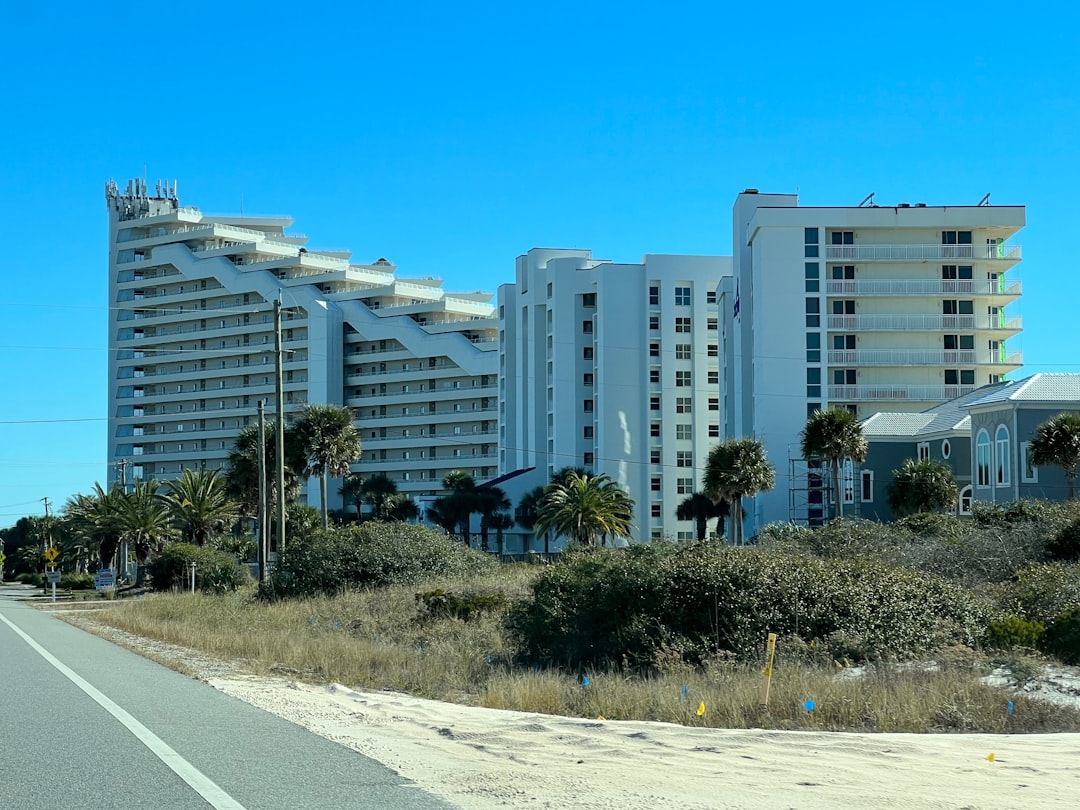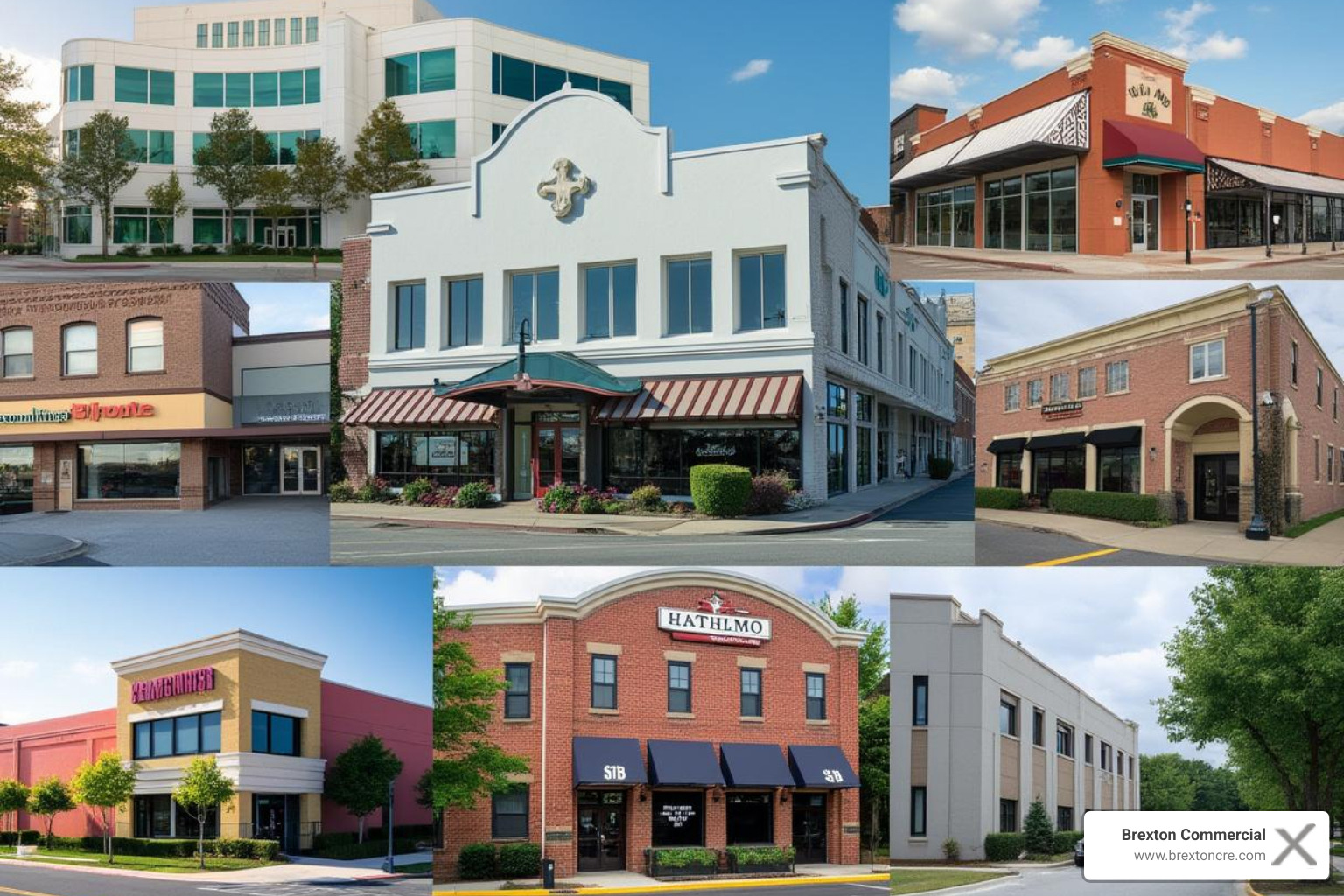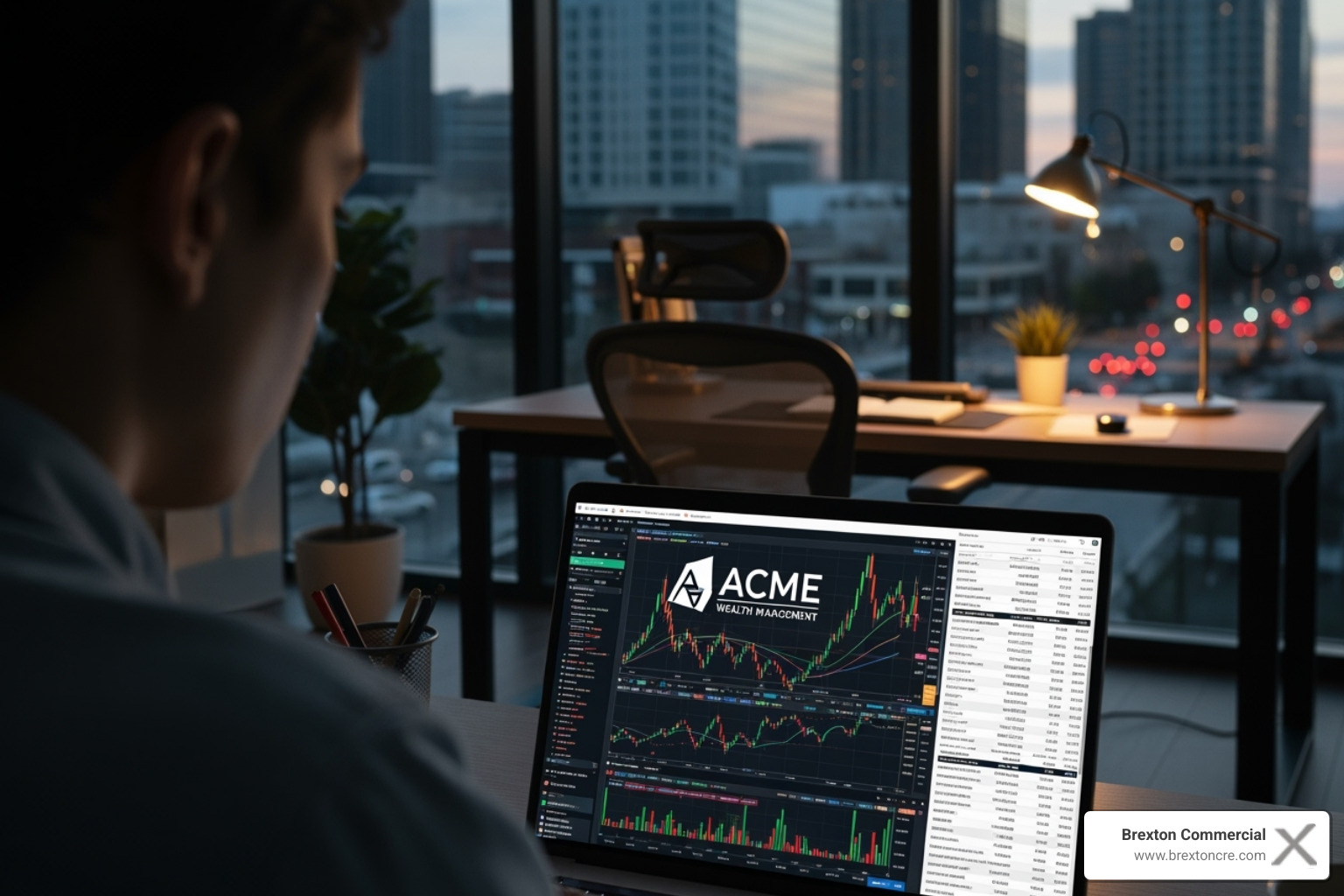Commercial real estate markets are dynamic landscapes that can appear complex at first glance. Yet, understanding their essentials can open up many opportunities for investment and growth. Here's the quick scoop:
- Economic Scenarios: The market adapts to changes in interest rates and inflation, impacting property values and rental income.
- Investment Opportunities: There's potential in affordable housing, digital economy properties, and industrial real estate.
- Sustainable Strategies: Deep-energy retrofits and climate resilience initiatives can improve property value and reduce costs.
Navigating the commercial real estate market in the Mid-Atlantic region offers exciting opportunities, especially with Brexton Commercial's custom services. As we face evolving economic scenarios and rising environmental concerns, innovative approaches in investment and sustainability are more important than ever. By focusing on smart strategies, like energy-efficient upgrades and digital change, businesses can not only thrive but also future-proof their investments.
With the right insights and guidance, even complex commercial real estate transactions can be managed efficiently, ensuring a successful investment journey.

Commercial real estate markets helpful reading:- Mid-Atlantic commercial real estate- commercial real estate advisory- real estate investment advisory services
Current Trends in Commercial Real Estate Markets
The commercial real estate markets are shifting, and understanding these trends is crucial for navigating the landscape. Let's explore the latest developments:
Vacancy Rates
Vacancy rates are a key indicator of market health. In the office sector, vacancy rates have been a concern, reaching record highs. For example, the office vacancy rate climbed to 20% in some areas, with cities like San Francisco experiencing rates as high as 22.1%. However, some markets are showing signs of stabilization. In New York, the vacancy rate is lower at 13.3%, suggesting a potential turn toward normalization.
In contrast, the industrial sector remains robust, driven by e-commerce and logistics demands. Vacancy rates here are steady at 6.8%, significantly below pre-pandemic levels. This stability highlights the ongoing demand for warehouse and industrial spaces.
Rent Growth
Rent growth varies across different sectors. The industrial sector leads the pack, with rents growing at a rate of 5.3% over the past year. This is due to the sustained demand for logistics and storage spaces.
Meanwhile, the multifamily sector is experiencing a unique situation. High mortgage rates have increased demand for apartment buildings, leading to a rise in vacancy rates to 7.8% due to new housing supply. This influx has absorbed much of the demand, stabilizing rent growth despite increased absorption.
Hybrid Work Impact
The rise of hybrid work models has significantly impacted office spaces. Many offices remain underused, contributing to high vacancy rates. Leasing activity is about 30% below pre-pandemic levels, reflecting the slow return to traditional office settings. As hybrid work becomes the norm, businesses are rethinking their space needs, leading to a change in how office spaces are used.
Despite these challenges, there are pockets of opportunity. Suburban office markets are showing signs of cap rate flatness or even declines, indicating potential investment opportunities for those looking to capitalize on changing work patterns.
The retail sector, particularly grocery-anchored centers and high-end retail, continues to perform well, benefiting from consumer preferences for in-person shopping experiences.

Understanding these trends provides valuable insights for navigating the commercial real estate markets. Staying informed about these dynamics will be key to making strategic investment decisions.
Key Challenges Facing Commercial Real Estate
Navigating the commercial real estate markets today involves tackling several significant challenges. Let's explore the main problems:
Interest Rates
Interest rates play a pivotal role in the commercial real estate landscape. Over recent years, liftd interest rates have been a major concern, affecting borrowing costs and investment decisions. Higher rates make financing more expensive, which can dampen property acquisitions and development projects. However, there is a silver lining: central banks are on the verge of loosening monetary policies. This shift could offer some relief, though a single rate cut may not be enough to ease refinancing risks or lower acquisition costs immediately.
Refinancing Risk
Refinancing risk is a pressing issue for many in the industry. As loans mature, property owners face the challenge of securing new financing in an environment of high interest rates and stringent lending conditions. This is particularly concerning for those with loans that were initially taken out at lower rates. The looming $1 trillion debt wall in the office sector, coupled with high delinquency rates on commercial mortgage-backed securities, underscores the importance of managing refinancing risks effectively. Property owners need to be proactive in planning and negotiating favorable terms to mitigate this risk.
Tax Policies
Tax policies have a direct impact on the profitability and viability of commercial real estate investments. The industry is currently advocating for the preservation of key tax breaks, such as pass-through deductions and like-kind exchanges, which are crucial for maintaining competitive returns. With the potential expiration of certain tax cuts, there is an urgent need for policy stability. As David McCarthy from the Commercial Real Estate Finance Council puts it, "Do no harm" is a guiding principle for real estate organizations. Any increase in taxes could exacerbate existing challenges, particularly given the sector's high fixed costs and illiquid nature.

Understanding these challenges is essential for anyone involved in the commercial real estate markets. By staying informed and adapting to these dynamics, stakeholders can better position themselves for future success.
Opportunities in Commercial Real Estate Markets
Despite the challenges, the commercial real estate markets are brimming with opportunities. Let's explore some promising areas:
Digital Economy Properties
The digital economy is booming, and with it comes a surge in demand for properties like data centers. With the rise of artificial intelligence (AI), the need for data storage has skyrocketed. This has led to a global proliferation of data centers. However, there's a catch: these facilities are energy-intensive. Estimates suggest that electricity use by data centers could more than double by 2026, potentially consuming over 250 billion gallons of water annually by 2030. Source.
For investors, this means there's a growing market for sustainable data centers. Those who can balance the demand for AI-driven storage with environmental concerns will find lucrative opportunities.
Industrial Properties
Industrial properties are another hot spot. Two key factors are driving this trend. First, companies are reshoring manufacturing facilities closer to home to boost supply chain resilience. This has been particularly true since the United States-Mexico-Canada Agreement in 2020. For instance, Mexico has become a favored location due to its low labor costs and high availability, even surpassing China as the largest exporter to the U.S. in 2023. Source.
Second, the semiconductor industry is thriving. Since the CHIPS and Science Act in 2022, semiconductor manufacturers have increased their leasing activity by 33%. This has led to a ripple effect, with surrounding properties seeing rent increases of up to 48% in some markets. For investors, industrial properties linked to these sectors present strong growth potential.
Multifamily Properties
The multifamily sector is also showing promise. With high mortgage rates around 7%, many are turning to apartment living, driving demand for multifamily units. In fact, the sector rebounded significantly with net absorption more than doubling in the first quarter of this year compared to the same period last year. However, despite the demand, vacancy rates increased to 7.8% due to new housing supply. Source.
This indicates a vibrant market where investors can capitalize on the growing need for rental properties, especially in urban areas where homeownership is becoming less attainable.
These opportunities in the commercial real estate markets suggest a bright future for those ready to adapt and invest wisely. Next, we’ll take a look at what the future holds for these markets.
Future Outlook for Commercial Real Estate Markets
As we look to the future of commercial real estate markets, several key factors will shape the landscape. Understanding these can help investors and stakeholders make informed decisions.
Economic Recovery
The global economy is on a recovery path, albeit unevenly across regions. For instance, Deloitte's economics team projects faster GDP growth in India and Singapore, while the United States may see a slowdown by 2025. This mixed recovery can influence demand for commercial properties. In regions with robust growth, expect increased activity and demand for office, retail, and industrial spaces. Conversely, areas facing slower growth might see more caution in real estate investments.
Rate Cuts
Interest rates have been a hot topic recently, with central banks making moves to ease monetary policies. The European Central Bank and the Bank of Canada have already cut rates, while the U.S. Federal Reserve has held steady for now. Rate cuts can lower borrowing costs, making it easier for investors to finance new projects or refinance existing ones. However, it's important to note that while a rate cut can boost sentiment, it doesn't automatically solve issues like refinancing risk for maturing loans.
M&A Activity
Mergers and acquisitions (M&A) in the commercial real estate sector could see a rise as companies seek to consolidate and optimize their portfolios. The promise of more clarity in the economic landscape over the next 12 to 18 months could spark increased M&A activity. Strategic acquisitions can offer companies a competitive edge, allowing them to expand into new markets or improve their service offerings.
In summary, the future of commercial real estate markets is shaped by economic recovery, interest rate dynamics, and strategic M&A moves. These factors present both challenges and opportunities for those involved in the sector.
Next, we'll address some frequently asked questions about the commercial real estate market.
Frequently Asked Questions about Commercial Real Estate Markets
What is the future of the commercial real estate market?
The future of commercial real estate markets is a topic of much discussion. One concern is the level of distress in the market. According to a recent analysis, delinquencies in commercial real estate have climbed to 5% as of May, up from 3.6% the previous year. This is partly due to high vacancy rates and falling property values, especially in the office sector.
New development is also slowing down. In the office sector, construction has decreased by 63% since the pandemic began. This reduction in new supply could lead to tighter market conditions, potentially supporting rental rates and occupancy levels in certain sectors like retail.
What are the biggest challenges in commercial real estate?
One major challenge is the high cost of entry. Buying commercial property often requires a significant upfront investment, sometimes needing at least 30% down to secure financing. This can be a barrier for many potential investors.
Rising interest rates are another hurdle. They make borrowing more expensive, which can reduce demand and lower property prices. High interest rates have already contributed to a 30% drop in U.S. CRE values since the Federal Reserve started raising rates.
What is the outlook for commercial real estate in 2024?
Looking ahead to 2024, the outlook for commercial real estate markets includes both challenges and opportunities. Changing demographics are reshaping the market. For example, as more people move to urban areas, there is increased demand for multifamily properties.
The growth of the digital economy is also influencing the market. Industrial properties, which support e-commerce and logistics, continue to perform well. Rent growth in this sector is outpacing others, with rates 5.3% higher than a year ago.
Overall, while there are challenges like high entry costs and rising interest rates, there are also promising opportunities in sectors like multifamily and industrial properties. As demographics shift and the digital economy grows, these areas may offer potential for savvy investors.
Conclusion
As we steer the complex landscape of commercial real estate markets, Brexton Commercial stands out with its personalized approach and commitment to excellence. Our boutique firm, located in the Mid-Atlantic region, is dedicated to providing custom solutions that meet the unique needs of each client.
Our investment advisory services are designed to guide you through the intricacies of the market. We focus on stabilizing your assets, maximizing value, and ensuring strategic success. Our team of experts offers a hands-on approach, helping you make informed decisions in a rapidly changing environment.
We understand the challenges facing the industry, from rising interest rates to the high cost of entry. Yet, we also see the opportunities in sectors like industrial and multifamily properties, driven by demographic shifts and the growth of the digital economy.
At Brexton Commercial, we believe in aligning our strategies with your goals. Whether you're looking to invest, manage, or sell, we're here to support you every step of the way. Our personalized service and deep market knowledge ensure that we not only meet your expectations but exceed them.
When commercial real estate is changing, partnering with a firm that understands your needs can make all the difference. Let us help you crack the code to success in the commercial real estate markets.




